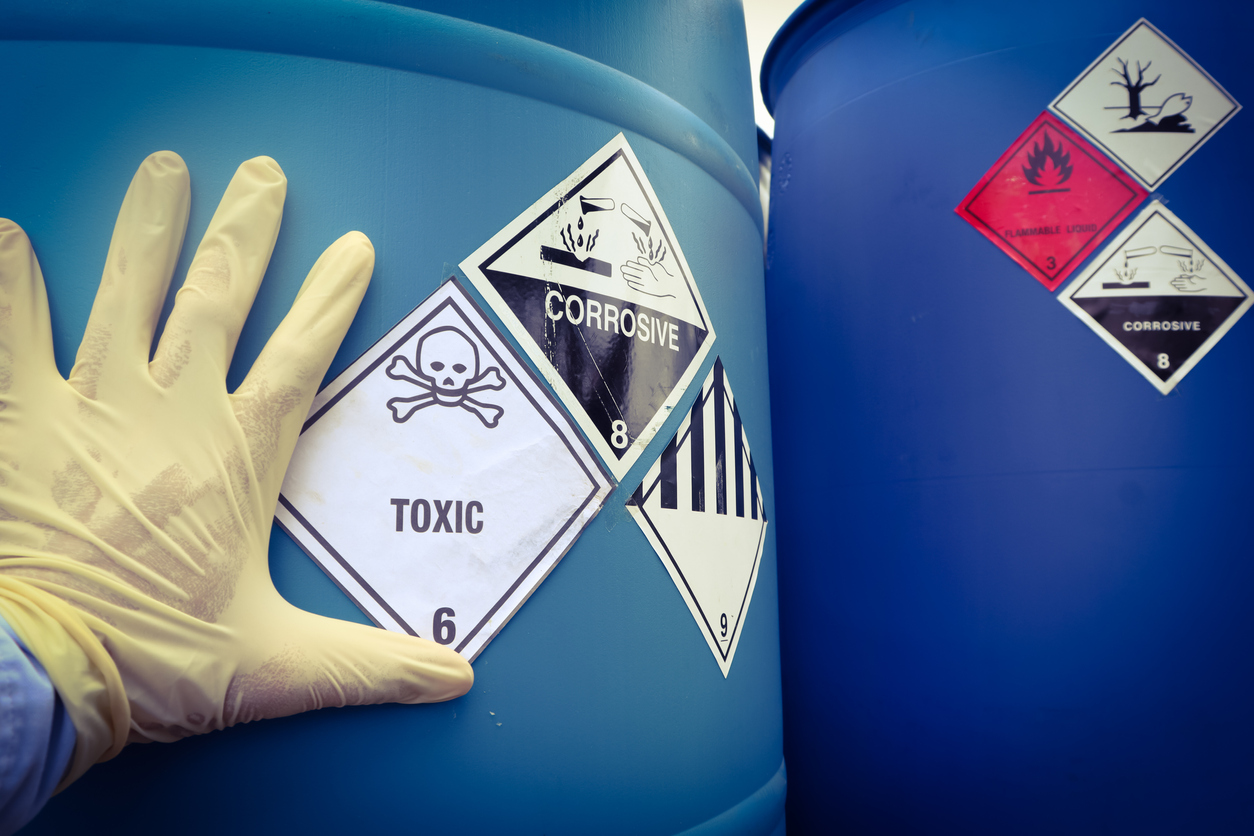If you have employees whose work involves the use of chemicals, solvents, and other hazardous materials, OSHA requires that you train them in their safe use, transport, and storage, and a key component of that is understanding the various labels and warnings.
Not understanding what pictograms on labels mean and the precautions workers need to take when using each hazardous material can lead to fires, explosions and injuries or worse. Pictograms along with labels and safety data sheets (SDSs) are at the heart of injury or accident prevention in workplaces that store and use hazardous materials.
If your operation uses hazardous materials, OSHA’s Hazard Communication Standard requires that you have in place safety training and procedures for storing, transporting, and working safely with hazardous materials.
The agency’s standard requires employers to use the Globally Harmonized System of Classification and Labeling (GHS), which is the worldwide standard for communicating dangers about hazardous substances.
The GHS is designed to be understandable by everyone through the use of pictograms, which provide uniform details on the nature and degree of hazard of a product. Accompanying labels and SDSs round out the information by providing additional guidance, including the precautions workers need to take when working with these materials.
Training
Training is of utmost importance and employers are responsible for ensuring their employees know how to safely work with hazardous substances specific to their workplaces.
The main elements to focus on are:
Labels: Chemical manufacturers and importers must provide a label that includes the product identifier, supplier information (including name, address, and phone number of the manufacturer, importer, or distributor). Labels also require each of the following:
- Pictograms — A pictogram is a uniquely identifiable symbol that when you see it, you should be able to identify a specific type of hazard. There are nine pictograms, each of them denoting a certain hazard.
- Signal words — Labels will display either of the following words: “Danger” for the most severe hazards or “Warning” for less severe.
- Hazard statement — This describes the nature of the hazard, including, where appropriate, the degree of hazard.
- Precautionary statement — This describes the actions you must take to prevent adverse effects from exposure to, improper storage of or handling of a hazardous chemical.
Safety Data Sheets (SDS): An SDS must accompany each hazardous material in storage or during transport. Under the GHS, these documents come in a standard, easy-to-use 16-section format, which further details the danger of a hazard, how to properly store it, safely handle it, and effectively respond in the event of an emergency.
Make sure your employees know exactly where the data sheets are and that they take the time to read them.
During your training, you should cover the GHS and how it works to warn workers about the substances they may encounter. Consider:
- Printing, disseminating and discussing the list of pictograms.
- Printing, disseminating and discussing a sample label to familiarize your employees with what to look for.
- Printing, disseminating and discussing the information on the SDSs for substances in your workplace.
- Discussing which personal protective equipment your staff should wear when working with hazardous substances.
- Discussing how to safely handle and store the substances in your workplace.
If you have a new employee, they should receive training before starting work. As well, if you have a new chemical you’ll be using, you should train your staff in its safe use, transport and storage.
Assistance
Fed OSHA has a plethora of materials and guidance specifically devoted to its Hazard Communications Standard on its website.
Hazardous-material spills or fires can cause severe damage, not to mention seriously endangering your workers and even third parties who work or live near your operation. Train your workforce in how to use them. 78


